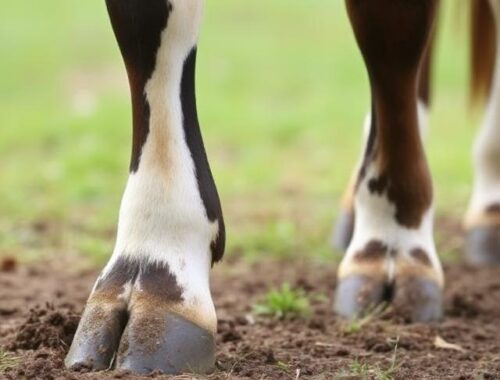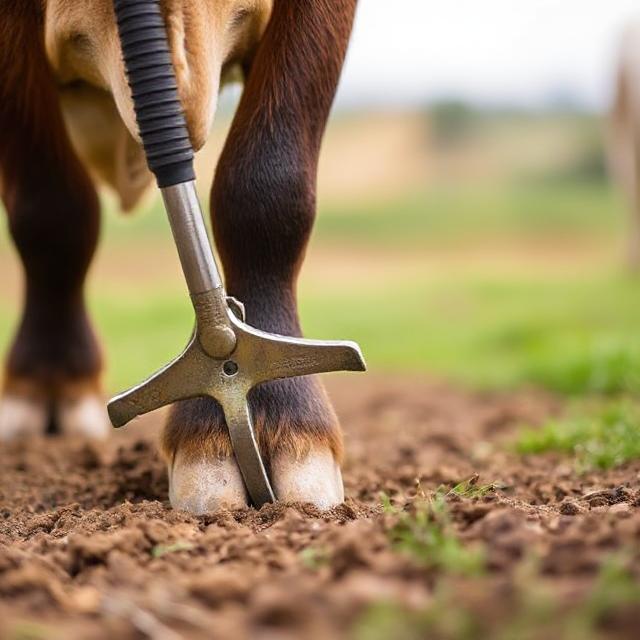
Best Hoof Care Tools for Livestock Owners: A Practical Buying Guide
Healthy hooves keep animals moving, grazing, and living their best lives. Whether you’re handling a herd of dairy cows or trimming a single backyard goat, one thing stays true—you need the right hoof care tools to get the job done safely and efficiently. Without them, even simple trims turn into frustrating chores. Good gear doesn’t just make life easier. It keeps your animals comfortable and saves you time and effort.
Let’s talk about what tools you’ll need, which ones fit different animals, and how to keep everything working season after season.

Why Quality Hoof Care Tools Matter
There’s a big difference between barely getting through a trim and doing it right. Cheap tools wear out fast. Worse, they often make the process riskier.
Better Trims with Less Work
When blades are sharp and well-balanced, you don’t have to force them. A smooth rasp or hoof knife makes all the difference. There’s no need to struggle with overgrown hooves or worry about rough edges. Using proper hoof care tools cuts your work in half and helps you stay accurate.
Safety Isn’t Optional
Poorly made gear creates real risks. Dull edges slip. Weak nippers break under pressure. That’s how people get cut and animals get injured. A set of safe trimming equipment keeps your hands steady and your animals calm. Tools made from high-carbon steel hold their edge longer and won’t snap when it counts.
Less Trouble Down the Road
Cracks, abscesses, and hoof rot don’t show up overnight. They build over time when hooves go unchecked. The right hoof care tools help prevent those issues with clean, regular trims. And that means fewer vet visits, stronger animals, and more time enjoying your livestock—not nursing them back to health.

Must-Have Tools for Basic Hoof Maintenance
You don’t need a hundred tools to maintain healthy hooves, but you do need gear that actually works. A basic hoof trimming kit will cover most day-to-day needs. Here’s what to look for:
- A sharp hoof knife that fits your hand.
- Nippers that feel solid but aren’t too heavy.
- A rasp with strong grip and sharp edges.
- A hoof pick with brush to clean out packed dirt.
- Antiseptic spray or conditioner for aftercare.
If you’re just starting out, farrier tools for beginners are your best bet. These usually come with safety features that help you trim with confidence while you build skill. They’re lighter, easier to handle, and way less intimidating than pro-grade sets.
Don’t forget the extras. Antiseptic spray, livestock grooming supplies, and conditioner go a long way toward keeping hooves strong between trims. Every barn should have a clean, organized place to store everything when it’s not in use.
Choosing the Right Tools by Animal Type
Every animal has a different hoof shape, size, and texture. What works for horses won’t cut it for goats, and cattle need something even tougher.
| Animal | Recommended Tool Types |
|---|---|
| Goats | Narrow trimmers, curved hoof knives |
| Sheep | Compact nippers, basic rasps |
| Horses | Equine hoof care tools: hoof stands, pullers, long rasps |
| Cattle | Extra-wide nippers, reinforced cattle hoof tools |
Goats have softer, smaller hooves that don’t need heavy pressure. That’s where goat hoof trimmers come in. These lighter tools offer better control and reduce the risk of crushing. Horses need a bit more—angled rasps, stands to support their legs, and sometimes pullers for shoe removal. For larger herds or stronger animals, cattle hoof tools built to take more force are non-negotiable.
The goal is precision without struggle. Matching your hoof care tools to your livestock means better results and less frustration.
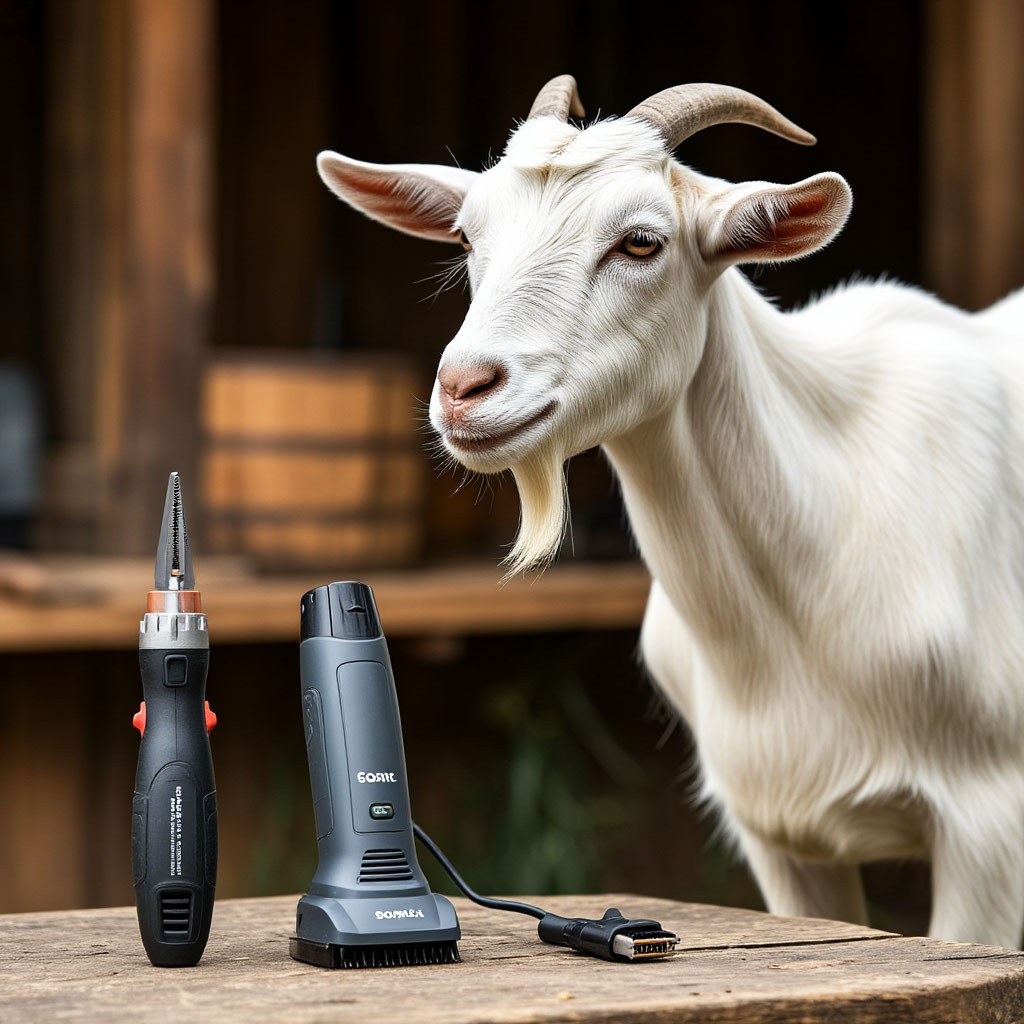
Manual vs Electric Hoof Trimmers
Some folks swear by electric tools. Others stay loyal to the old-school way. Both have their place, but which works better depends on your setup.
Manual Tools Keep It Simple
Manual gear is quiet and doesn’t scare animals. If you’re only trimming a few goats or one horse, it’s more than enough. Tools like rasps, hoof knives, and nippers don’t need power cords or batteries, and they’re easier to control if you’re still learning. Most hoof care tools fall into this category—and for good reason. They work.
Electric Trimmers Save Time
If you’re trimming a lot of hooves in one session, electric tools help. They remove material fast and take the strain off your hands. They’re ideal for large farms, especially with cattle. Just remember: they require maintenance, cost more, and need animals that tolerate noise. Even then, keep a hoof trimming kit nearby for fine-tuning or finishing work.
Electric or manual, use what fits your rhythm. The best hoof care tools are the ones that make your animals comfortable and the job manageable.
Top-Rated Hoof Care Tools for Beginners
New to hoof trimming? Start with tools made for learning. A beginner-friendly hoof trimming kit will include a few safe, well-designed basics. Lightweight nippers, a curved hoof knife with a rubber grip, and a reliable hoof pick with brush go a long way.
Farrier tools for beginners often feature shorter handles, soft grips, and spring-loaded motion that helps reduce effort. They’re built to offer control and confidence, not just power. If a tool feels too heavy, too sharp, or too bulky—skip it. Clumsy tools cause clumsy cuts.
Look for gear labeled for goats or horses, depending on your animals. Best hoof knives come in different shapes; curved blades are easier for scooping, while straight ones help with precision. Try both if you can.
A small investment in the right beginner tools saves a lot of trial and error. You’ll learn faster and keep your animals safer along the way.
How to Maintain and Store Your Tools
Even the best hoof care tools lose their edge if you neglect them. A rusty knife or dull nippers do more harm than good. Keep tools in top shape with these habits:
- Sharpen blades every few trims using a file or stone.
- Clean and disinfect tools after each use.
- Wipe all surfaces dry before storing.
- Apply oil to metal parts to prevent rust.
- Check electric cords and batteries regularly.
Store your gear somewhere clean and dry. Use toolboxes, plastic bins, or a tack room shelf. If you’re using electric tools, check wires and motors regularly. A little care goes a long way. Your tools will last longer, and your animals will benefit from every safe, clean trim.
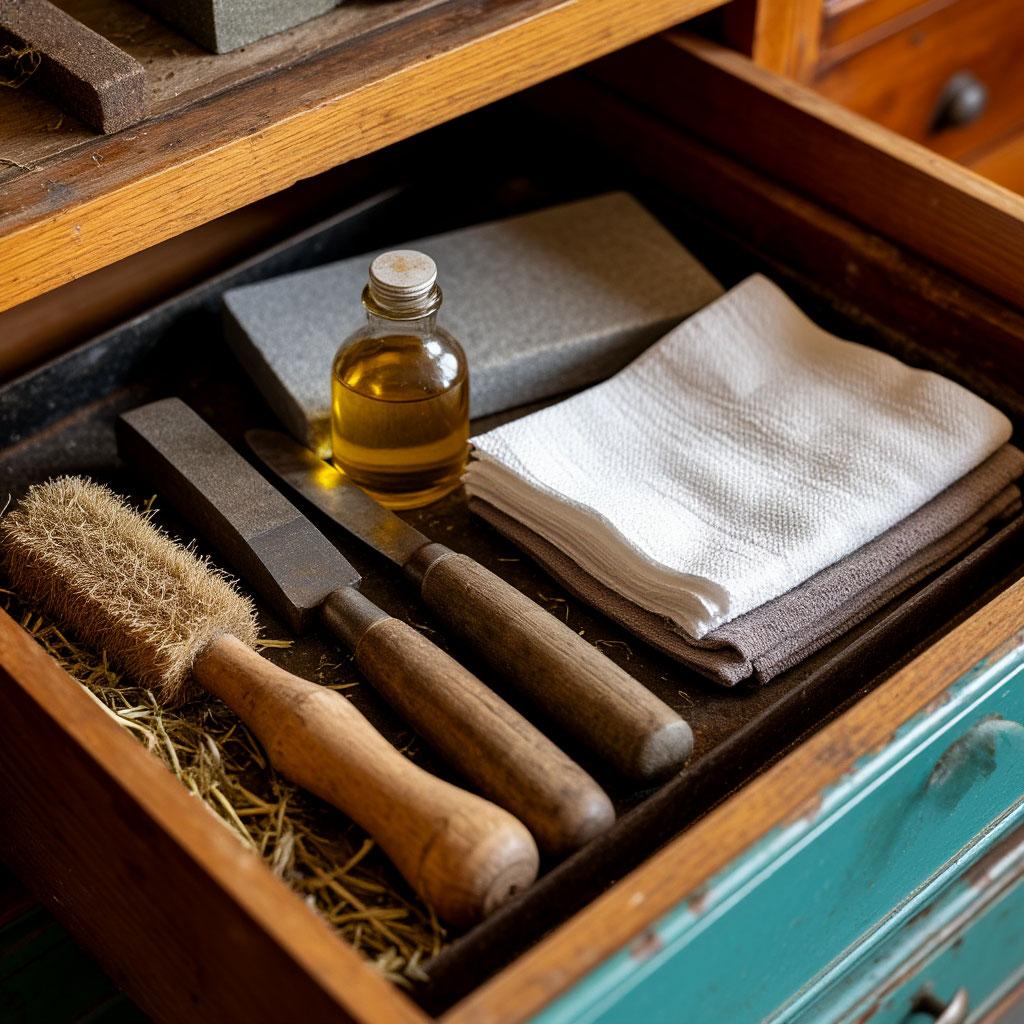
Where to Buy Reliable Hoof Care Equipment
You don’t have to hunt hard to find good gear. Most farm supply stores carry solid brands. Ask other livestock owners what they use. Farriers often have insight on which hoof care tools hold up and which fall apart.
Online shops offer more variety, but read reviews carefully. Make sure materials are listed. Look for stainless or high-carbon steel. Avoid plastic handles unless they’re reinforced. If something seems too cheap, it probably won’t last. Some of the best kits—like compact goat hoof trimmers or starter sets—can be found online, but only from trusted sellers.
A good return policy helps if something doesn’t fit right. Test tools on a small trim before using them fully. The right fit makes all the difference.
Healthy Hooves Start with the Right Tools
Better hooves start with better tools. When you’ve got the right hoof care tools, every step—from cleaning to trimming to smoothing—feels easier and safer. Whether you’re brushing mud off with a sturdy hoof pick with brush, cleaning up angles with a sharp knife, or tackling thick growth with a reliable rasp, the right gear turns a hard job into a manageable one.
Don’t settle for less. Invest in hoof care tools that fit your animals, your hands, and your pace. Your livestock will stay healthier. You’ll stay happier. And those trims? They’ll go a whole lot smoother.
You May Also Like

Understanding Laminitis: Causes, Symptoms, and Recovery Tips
June 26, 2025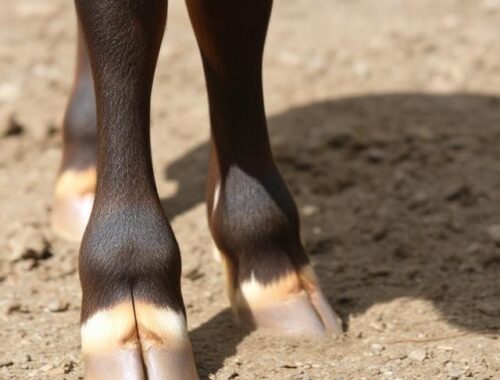
Comparing Cloven and Single Hooves: Anatomy Across Species
June 26, 2025